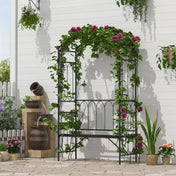Choosing the right bed is essential for both your sleep quality and your bedroom's aesthetic. The perfect bed will complement your room size, reflect your style, and offer the comfort you need for a good night's rest. With so many options available, selecting the right one can be overwhelming. This guide will help you navigate through bed sizes, styles, and comfort tips to make an informed decision.
Understanding Bed Sizes
Bed sizes are one of the most crucial factors to consider when purchasing a new bed. Selecting the wrong size can lead to discomfort or make your room feel cramped. Here’s a quick guide to help you understand the standard bed sizes:
Twin and Twin XL
- Dimensions: Twin beds are typically 38 inches wide and 75 inches long, while Twin XL beds are 80 inches long.
- Best For: Children’s rooms, guest rooms, or small spaces. Twin XL is ideal for taller individuals.
- Pros: Space-saving and cost-effective.
- Cons: Limited sleeping space for adults.
Full/Double
- Dimensions: 54 inches wide and 75 inches long.
- Best For: Solo sleepers who want more space or couples in smaller rooms.
- Pros: More sleeping space than a twin.
- Cons: Can be cramped for two adults.
Queen
- Dimensions: 60 inches wide and 80 inches long.
- Best For: Couples or solo sleepers who like extra space.
- Pros: Spacious enough for two adults and fits well in most bedrooms.
- Cons: May not fit well in very small rooms.
King and California King
- King Dimensions: 76 inches wide and 80 inches long.
- California King Dimensions: 72 inches wide and 84 inches long.
- Best For: Couples or individuals who prioritize space.
- Pros: Maximum sleeping space. California King is great for taller individuals.
- Cons: Requires a larger room.
Selecting the Perfect Bed for Your Space
Once you've chosen the appropriate bed size, consider how it will fit into your bedroom. Here are some tips to make sure your bed complements your space:
Measure Your Room
Before purchasing a bed, measure your room to ensure that the bed will fit comfortably. Don’t forget to consider the space needed for other furniture and the ability to move around the room.
Consider the Room Layout
Think about the layout of your room. Where are the doors, windows, and other furniture? Your bed should fit into this layout without obstructing pathways or natural light.
Leave Room for Movement
Ensure there’s enough space to walk around the bed and access other furniture. A cramped room can feel uncomfortable and reduce the functionality of your space.
Choosing a Bed Style
Your bed is the focal point of your bedroom, so its style should reflect your personal taste and the overall design of your room.
Platform Beds
- Description: These beds have a low profile and usually don’t require a box spring.
- Style Fit: Modern, minimalist designs.
- Benefits: Sleek look, often with built-in storage.
Canopy Beds
- Description: Feature four posts connected by a frame, often draped with fabric.
- Style Fit: Traditional, romantic, or bohemian designs.
- Benefits: Adds elegance and can create a cozy, enclosed feel.
Sleigh Beds
- Description: Known for their distinctive curved headboard and footboard.
- Style Fit: Classic, traditional designs.
- Benefits: Stately appearance, adds a touch of luxury.
Storage Beds
- Description: Incorporate built-in drawers or shelves.
- Style Fit: Ideal for small spaces or minimalist designs.
- Benefits: Maximizes storage without sacrificing style.
Upholstered Beds
- Description: Feature a cushioned headboard covered in fabric or leather.
- Style Fit: Versatile, fits both modern and classic designs.
- Benefits: Comfortable for sitting up and reading in bed.
Prioritizing Comfort
Comfort is key to a good night's sleep, and choosing the right mattress and bedding can make all the difference.
Mattress Types
- Innerspring: Traditional and widely available, good support, and range in firmness.
- Memory Foam: Conforms to the body, relieves pressure points, and offers motion isolation.
- Latex: Offers support and comfort, with a bouncy feel, and is hypoallergenic.
- Hybrid: Combines innerspring and foam for support and comfort.
Mattress Firmness
Consider your sleeping position and personal preference when choosing mattress firmness. Side sleepers may prefer softer mattresses, while back and stomach sleepers often need firmer support.
Quality Bedding
Don’t overlook the importance of quality sheets, pillows, and comforters. Invest in breathable, soft materials that complement your mattress and enhance your sleep experience.
Final Tips for Choosing Your Bed
- Test Before You Buy: Whenever possible, try out beds in-store. Spend time lying down in your typical sleeping position.
- Budget Considerations: Invest in the best quality you can afford. A good bed is an investment in your health and well-being.
- Think Long-Term: Choose a bed that you’ll love and that will last. Trends come and go, but comfort and quality are timeless.
In conclusion, selecting the perfect bed involves considering the size of your space, your personal style, and the comfort level you require. By understanding your needs and the options available, you can make a choice that ensures restful nights and stylish living. Sweet dreams!













